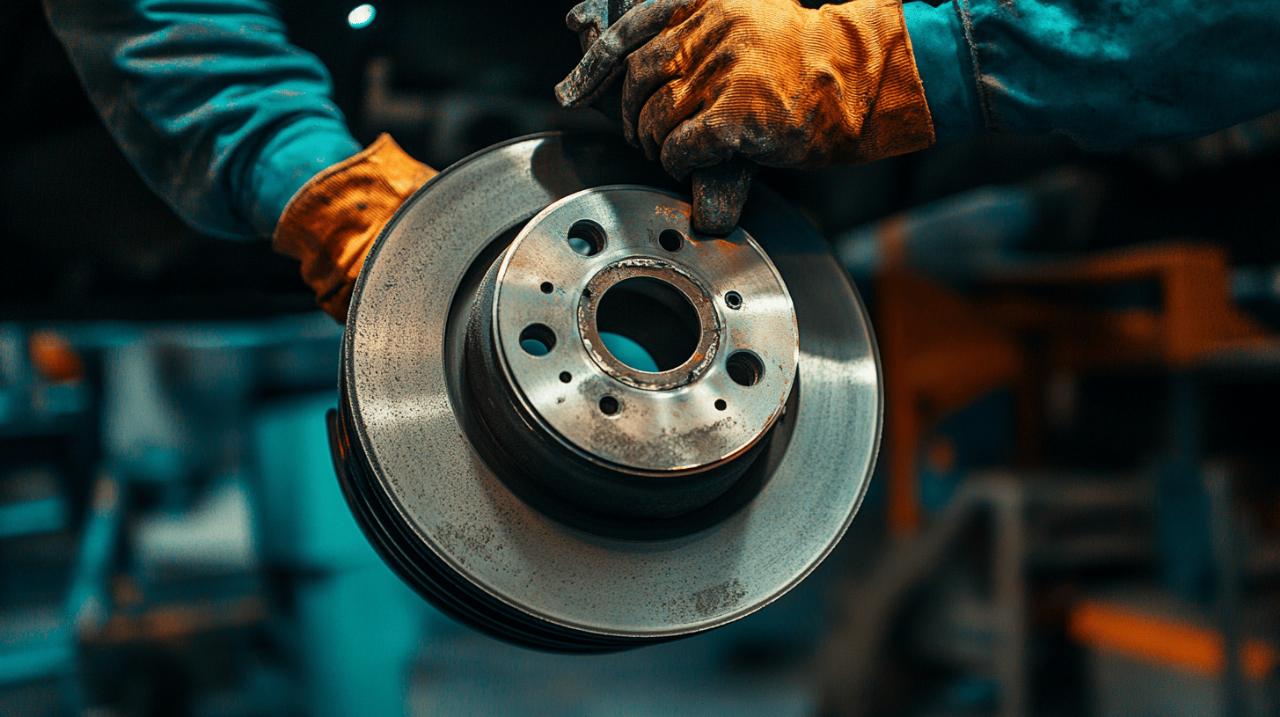Tools and safety preparation
Before embarking on any brake maintenance task, ensuring you have the right tools and safety measures in place is crucial. Many vehicle owners find significant savings by performing brake maintenance themselves, rather than visiting a professional garage like https://www.auto-service-gall.de/ or similar establishments. However, safety should never be compromised for cost savings when working on such a critical vehicle system.
Essential equipment for brake maintenance
The proper tools make brake pad and fluid changes considerably easier and safer. You will need a jack and jack stands rated for your vehicle’s weight, wheel chocks, a lug wrench, a C-clamp or brake caliper piston tool, a torque wrench, and various sizes of wrenches and sockets. For the brake fluid change, gather a brake bleeding kit, fresh brake fluid of the type specified for your vehicle, a clear hose, a catch container, and clean rags. Having everything prepared before starting will make the process more efficient and reduce the chance of contamination.
Safety measures before starting the job
Safety cannot be overstated when working with brake systems. Always work on a flat, solid surface and ensure the vehicle is completely cool, especially if you have been driving recently. Securely chock the wheels that will remain on the ground to prevent any movement. When raising the vehicle, position the jack at the manufacturer’s recommended lifting points and always use jack stands for support rather than relying solely on the jack. Wear protective gloves to shield your hands from sharp edges and brake dust, which can contain harmful substances. Eye protection is essential, particularly when working with brake fluid which can cause serious eye damage if splashed.
Brake pad replacement process
Replacing brake pads is one of the most common maintenance tasks for vehicle owners. With front brake pads typically wearing out faster than rear ones due to the distribution of braking force, knowing how to perform this maintenance can save considerable time and money. The process requires attention to detail but is manageable for most people with basic mechanical knowledge.
Removing the wheel and accessing the brake assembly
After safely lifting and securing your vehicle, remove the wheel to expose the brake assembly. Locate the caliper, which holds the brake pads against the disc. You will notice the caliper is secured with bolts or pins that need to be removed to free it. Once loose, carefully lift the caliper away from the disc without disconnecting the brake line. Suspend the caliper with wire or a bungee cord to prevent strain on the brake hose. This allows clear access to the old brake pads, which can now be removed from their mounting brackets. Take note of how they were positioned to ensure correct installation of the new pads.
Installing new brake pads properly
Examine the brake disc for signs of wear such as scoring, grooves, or uneven surfaces that might indicate the need for disc replacement. If the disc appears in good condition, clean the area thoroughly to remove brake dust and debris. Apply a small amount of brake grease to the back of the new pads and any contact points that do not touch the braking surface to reduce noise and improve performance. Place the new pads into the caliper bracket in the same orientation as the old ones. Before reinstalling the caliper, you will need to compress the caliper piston back into its housing to accommodate the thicker new pads. Use a C-clamp or specialized caliper tool for this task, taking care not to damage the piston or brake lines. 
Brake fluid change procedure
The brake fluid in your vehicle plays a critical role in transferring the force from your foot on the pedal to the brake pads that stop your wheels. Over time, brake fluid absorbs moisture from the air, which can reduce its effectiveness and potentially damage brake components. Regular replacement, typically every two years or as recommended by your vehicle manufacturer, helps maintain optimal braking performance.
Locating and evaluating the brake fluid reservoir
The brake fluid reservoir is typically located on the driver’s side of the engine compartment, mounted on the brake master cylinder. It is often a translucent container that allows you to check the fluid level and condition without opening it. Before beginning the fluid change, examine the current fluid. Fresh brake fluid should be clear with a slight amber tint, while old fluid appears darker and may contain contaminants. Check the reservoir cap for the specific type of brake fluid required for your vehicle. Using the incorrect type can cause seal damage and brake failure. Clean the area around the reservoir cap thoroughly to prevent dirt from entering the system when opened.
Bleeding the brakes and adding fresh fluid
The process of changing brake fluid involves bleeding the system to remove old fluid and air bubbles. Start by opening the reservoir and removing some of the old fluid with a turkey baster or similar tool, being careful not to empty it completely. Refill with fresh fluid to the maximum line. Beginning with the brake furthest from the master cylinder, usually the right rear, attach a clear hose to the bleeder valve and place the other end in a container. Have an assistant press the brake pedal slowly and hold it down while you open the bleeder valve. Close the valve before your assistant releases the pedal. Repeat this process until the fluid coming out is clean and free of air bubbles. Check the reservoir frequently during this process, adding fresh fluid as needed to prevent it from running dry, which would introduce air into the system.
Testing and bedding in new brakes
After completing the brake pad and fluid replacement, proper testing and bedding in are essential steps that many overlook. These final procedures ensure your brakes will perform optimally and last as long as possible. Taking the time to complete these steps correctly can significantly improve brake performance and safety.
Initial testing of brake performance
Before taking your vehicle on the road, perform some basic tests to ensure the brake system is functioning correctly. Start by checking that the brake pedal feels firm and not spongy, which could indicate air in the system. With the engine running, press the brake pedal several times to build pressure in the system. The pedal should become firmer with each press. Carefully drive the vehicle at low speed in a safe, traffic-free area and test the brakes gently. The car should stop smoothly without pulling to either side. If you notice any unusual behavior, such as grinding noises, vibrations, or reduced stopping power, review your work or consult a professional before continuing to drive.
Proper bedding in techniques for optimal results
Bedding in new brake pads is the process of gradually transferring a thin layer of friction material from the pads onto the brake discs, which improves braking performance. Find a quiet road where you can safely accelerate and decelerate without disrupting traffic. Perform a series of moderate braking events from about 50 km/h down to 15 km/h, allowing about 30 seconds between each braking event for the brakes to cool. Avoid coming to a complete stop if possible, as this can lead to uneven material transfer. After about 10 cycles, perform 2-3 more aggressive stops from a higher speed, being mindful of traffic laws and safety. Finally, drive without using the brakes for about 10 minutes to allow them to cool completely. This process helps create an even layer of friction material on the discs, providing consistent brake performance and reducing the likelihood of brake noise or vibration.
